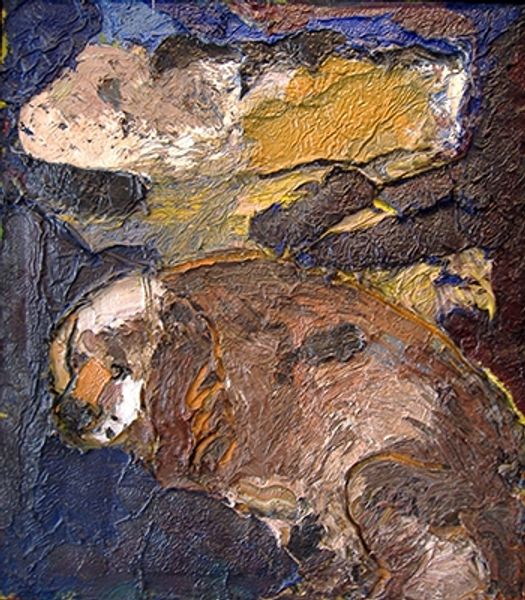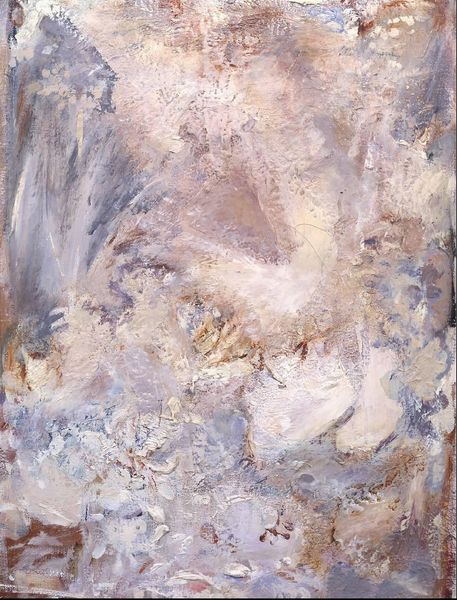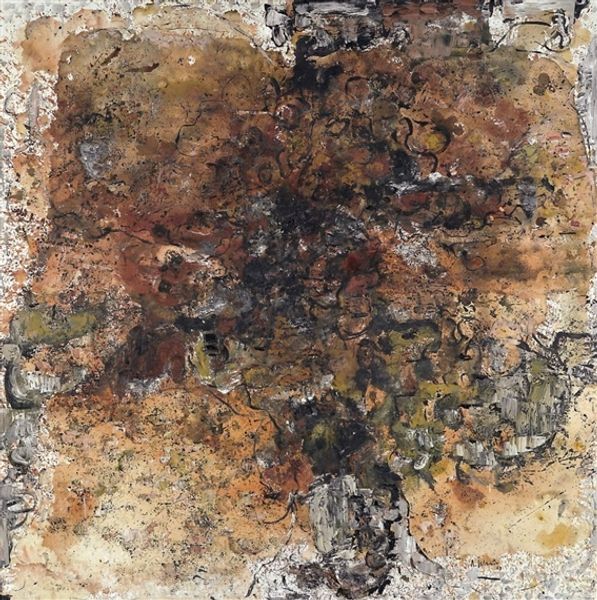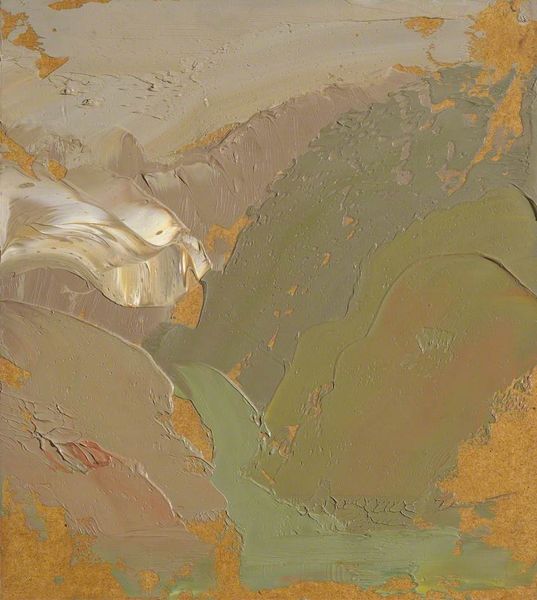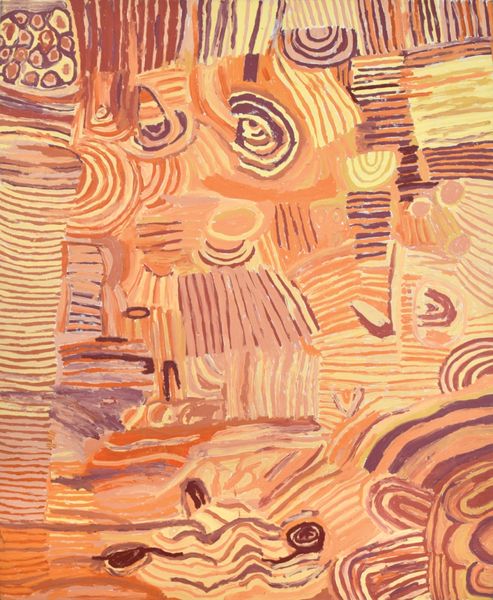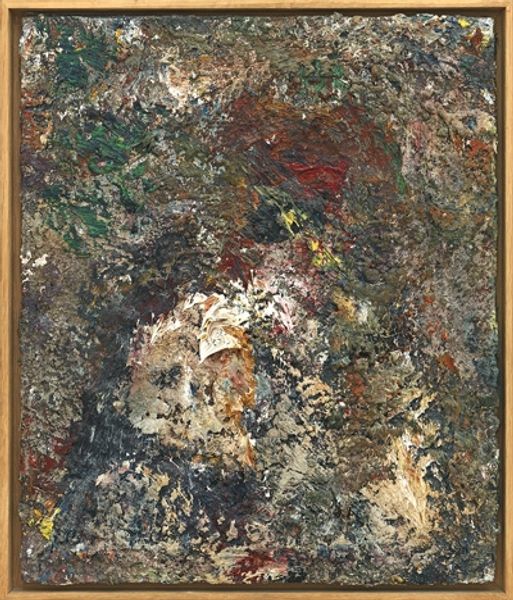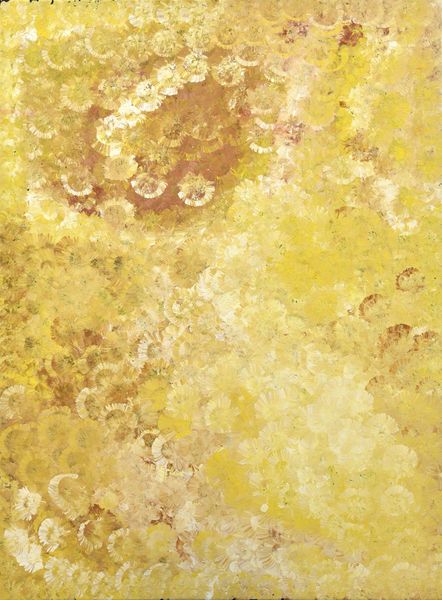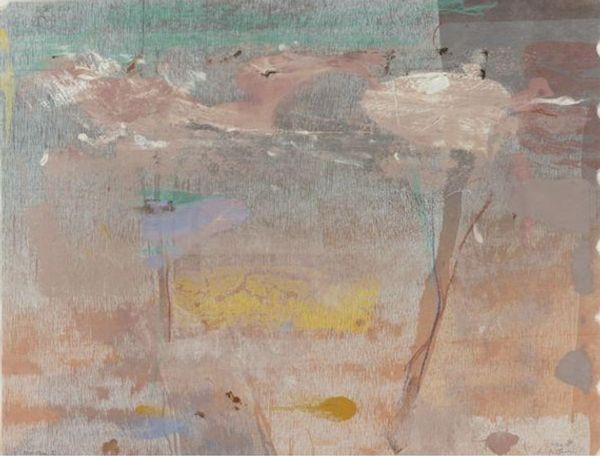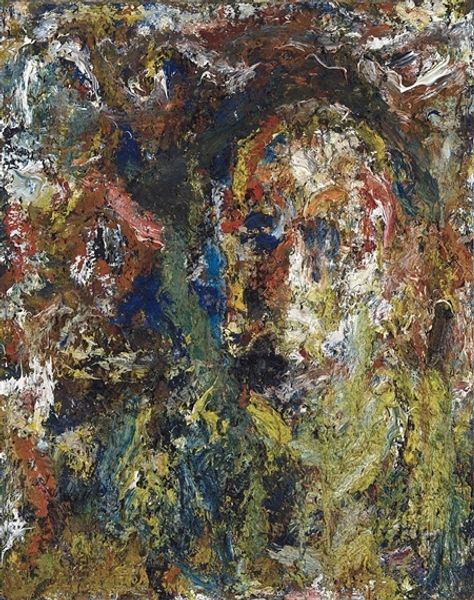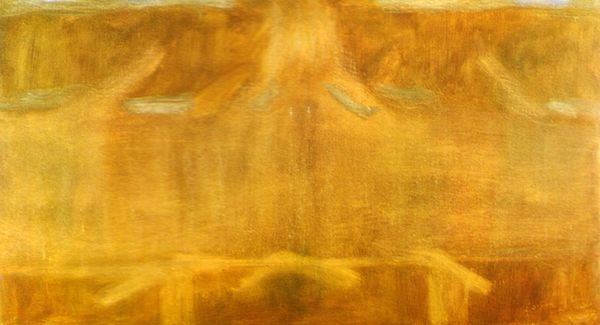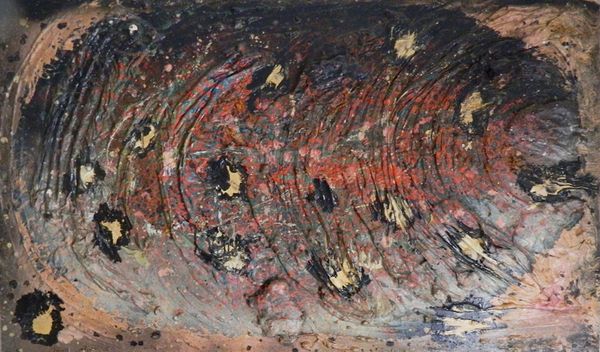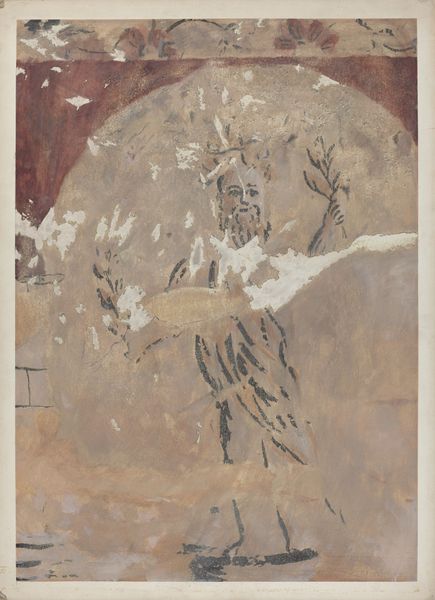
Dimensions: support: 305 x 216 mm frame: 393 x 294 x 53 mm
Copyright: © Frank Auerbach | CC-BY-NC-ND 4.0 DEED, Photo: Tate
Curator: Oh, wow. That's...intense. It feels like looking at an archaeological dig site of a face. Editor: Indeed. Here we have Frank Auerbach's "Small Head of E.O.W." currently residing in the Tate Collections. Auerbach, born in 1931, is known for his intensely worked surfaces. Curator: Worked is definitely the word! The sheer thickness of the paint, the layering... it's almost sculptural. I wonder what E.O.W. thought about sitting for this? It must have been a process. Editor: Considering Auerbach's process, likely a long one. These portraits are not just representations, but records of time, relationship, and a deep engagement with materiality. The earth tones evoke a sense of groundedness. Curator: It reminds me of memory, how it's built up layer by layer, often obscuring the original image. It's less about likeness and more about the act of remembering, or even excavating someone. Editor: Precisely. The weight of history, the palimpsest of experience...it speaks volumes about the human condition. I think Auerbach is inviting us to consider the burden of representation itself. Curator: That’s right. It's a powerful, unsettling work. Editor: Yes, food for thought.
Comments
tate 7 months ago
⋮
http://www.tate.org.uk/art/artworks/auerbach-small-head-of-eow-t00312
Join the conversation
Join millions of artists and users on Artera today and experience the ultimate creative platform.
tate 7 months ago
⋮
'E.O.W.' - Estella (Stella) West - was a principal model for Auerbach's nudes and female heads until 1973. She began posing regularly for Auerbach in the early 1950s and by 1959 was the subject of over thirty paintings and drawings. This painting is one of three versions which Auerbach worked on between May 1957 and April 1958. The paint's thickness is the result of hundreds of sittings governed by Auerbach's principle that 'Nothing can be left out ... you have to bury the irrelevent in painting somehow'. The way the image seems buried in a dense accretion of paint thus records Auerbach's quest to find a visual equivalent for his 'raw experience' of the sitter. Gallery label, September 2004
